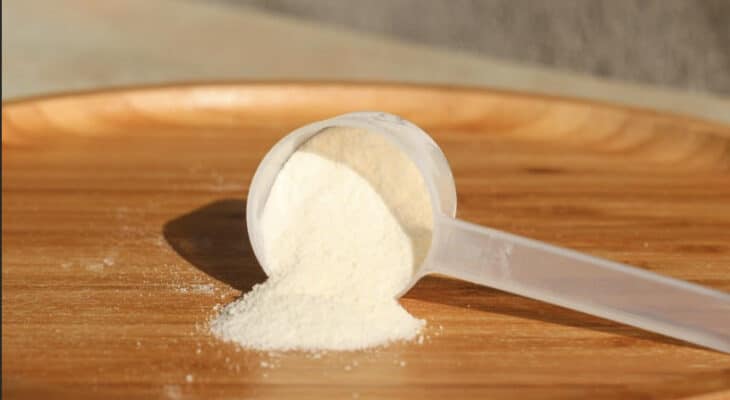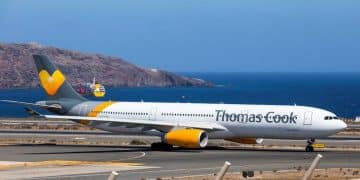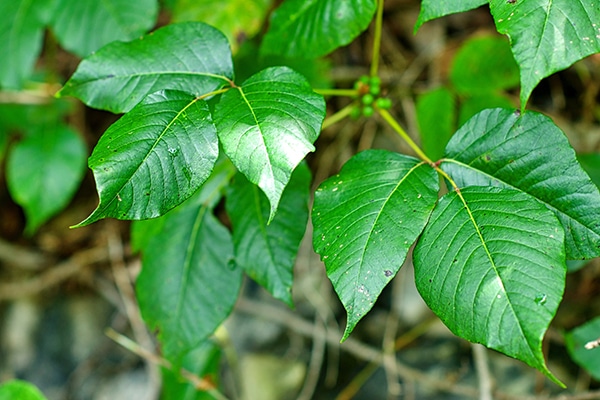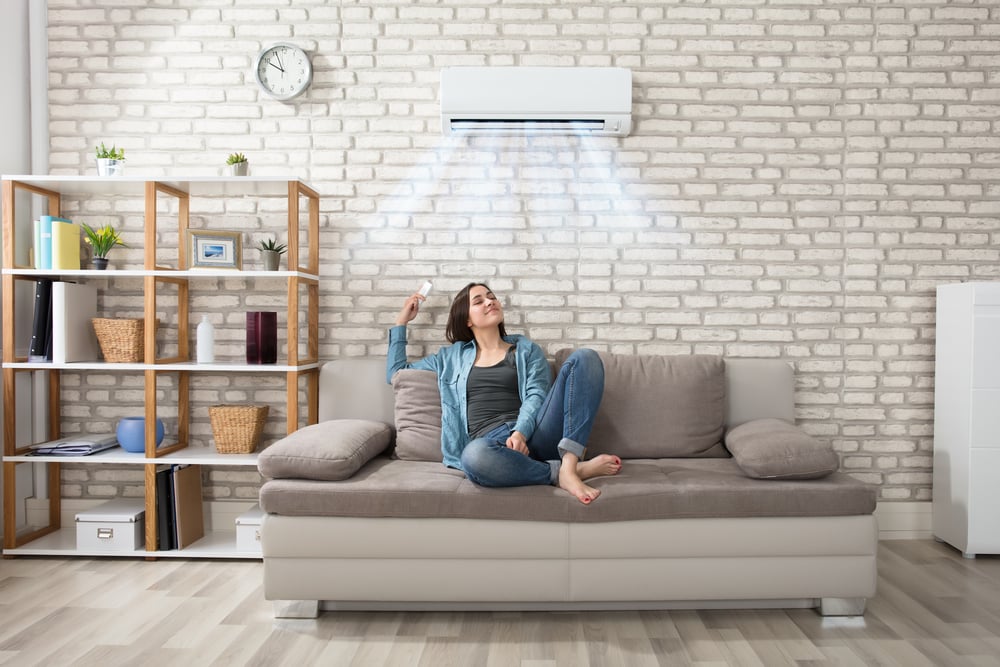Spring means sunshine, singing birds, budding flowers — and spring allergies.
Spring — March to June, depending on where you live — is prime time for sneezing, itchy eyes, runny nose, congestion, and watery eyes.
That’s because spring means pollen.
“Trees and grasses release these tiny grains into the air to fertilize other plants,” explains Neeta Ogden, M.D., member of the AAFA’s Medical Scientific Council who is in private practice as the director of The Allergy, Asthma and Sinus Center in Edison, New Jersey. “This leads to the cascade of allergy symptoms.”
To help reduce your suffering this year, try these expert tips.
1. Check the Pollen Count

Apps, websites, and your local news can provide a daily pollen count.
To be of use, know what you’re specifically allergic to, such as trees, grass, ragweed, or oak pollen.
If your triggers will be high that day, it’s best to stay indoors or, if you venture outside, wear a mask.
Also, plan your day accordingly: Tree and grass pollens are typically highest in the evening, while ragweed is typically highest in the morning.
And on windy days and hot, sunny days, all pollen counts are typically highest around midday, Odgen says.
2. Keep Your Windows Closed
Just as you’d close your windows and turn on the AC if you didn’t want a foul odor to come into the house, the same goes for allergens.
It’s particularly important to use the AC in your bedroom.
“Opening the windows can allow pollen into the room, and that pollen can then irritate you all night when you’re sleeping,” Shah says.
3. Change Your Air Filter
When’s the last time you changed your AC filter?
For people who have spring allergies, internal medicine specialist Shirin Peters, M.D., founder of Bethany Medical Clinic in New York City, recommends doing so monthly and using HEPA filters.
“Airborne particles filled with dust, pollen, and dander that trigger allergy symptoms are relatively large and are easily trapped by a HEPA filter, which is typically found in portable air-purifiers and HVAC systems,” she explains.
4. Attack the Dust Bunnies
- Vacuum and dust your place thoroughly, paying close attention to crevices where dust bunnies and cobwebs can hide.
- Then move on to carpets, pillows, curtains, upholstered furniture, and under the bed. Don’t forget to wipe down the fan blades.
- Repeat this regularly.
- Remember that whenever you crack a window or keep the door open to let in the fresh air, you’re also inviting allergens to make themselves at home.
- While you’re at it, use washable cotton or synthetic curtains and dust mite-proof covers to seal dust away from pillows and mattresses, Peters recommends.
If you don’t want to spend your entire spring and summer cleaning, consider storing any dust/pollen magnets — area rugs, decorative blankets, pillows, etc. — until allergy season is over.
5. Work Out Indoors
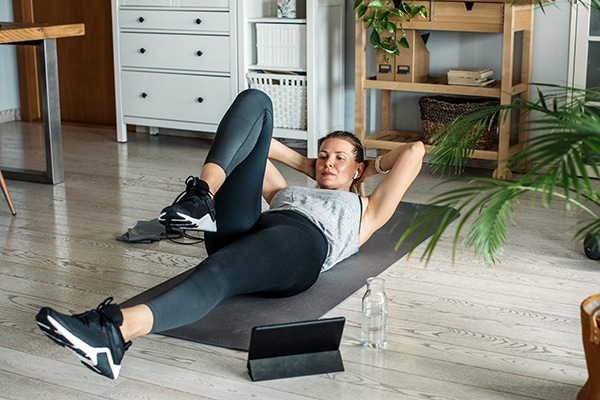
You’re probably exacerbating your allergy symptoms by huffing and puffing mold and pollen while you’re exercising outdoors.
Easy solution? Exercise indoors.
Now more than ever, you have a huge range of options to stream workouts right in your living room or home gym.
But if you do exercise outdoors, try these simple tips to reduce your allergen exposure:
- Exercise after it rains, when pollen counts are typically lower.
- Hit the trails when allergen levels are at their lowest: mornings for tree and grass pollen, later in the day for ragweed.
- Go for a run on days when it’s not windy.
- Wear a face mask for added protection.
6. Shower and Do Laundry ASAP
Whether it’s after an outdoor workout, gardening, or a casual stroll, when you get home after being outside, change your clothes and wash your face, body, and hair to remove pollen.
Peters recommends throwing clothes in the wash as soon as you walk inside from a day surrounded by grass and trees to reduce the spread of pollen in the home.
Don’t forget to ditch your shoes by the door so you don’t track allergens into the rest of the house.
And if you have a pet, you may want to wipe down their paws and coat with a wet paper towel or pet wipes after walks.
7. Skip Honey and Supplements
“The idea that local honey can prevent allergies is based on a well-established concept of immunotherapy — you get a tiny amount of the thing to which you are allergic and gradually increase the dose over time to help build immunity to the allergen,” Odgen explains.
Unfortunately, local honey doesn’t contain a lot of pollen or allergens.
“It’s more likely to contain insect-borne pollen, not wind-borne, which is what actually triggers seasonal allergies,” she says.
Similarly, there’s not enough scientific proof that any supplements help with spring allergies, Shah adds.
8. Consider OTC medications
You may feel you need a PharmD to navigate the allergy relief drugstore aisle.
Do you need an antihistamine, decongestants, pills, or sprays for spring allergies?
“Antihistamines or intranasal steroids are a good place to start,” Ogden says. “Decongestants can be added as needed for symptoms of nasal congestion or sinus pressure.”
Here’s a quick breakdown of these and other treatments:
- Oral antihistamine: When the immune system detects something we’re allergic to, it triggers the release of a chemical called histamine. This leads to spring allergy symptoms. Antihistamines block the effects of histamine, reducing or eliminating symptoms. Newer antihistamines typically don’t cause drowsiness but check the side effects on the box.
- Corticosteroid nasal spray: These fight the inflammation and nasal congestion caused by allergies, helping you breathe more easily. You can begin taking these up to a month before your allergies tend to kick in to try to head off problems.
- Decongestants: As the name implies, these help relieve congestion as well as post-nasal drip. Only use these sprays or pills for the worst days because decongestants can affect blood pressure and, if you use them for longer than three or four days, they can make your symptoms worse.
- Eye drops: If oral or nasal antihistamines don’t help relieve itchy, watery, red eyes, antihistamine eye drops may provide faster, more direct help.
9. Consider a Saline Rinse
A neti pot may look weird, but it works.
Research suggests that, compared to no treatment, using nasal irrigation (aka a saline rinse or neti pot) helps reduce allergy symptoms.
Nasal symptoms, in particular, lessen by about 28 percent, according to a meta-analysis published in the American Journal of Rhinology and Allergy in 2012.
“Any type of saline rinse used in the nose helps by washing away the allergy triggers like pollen,” explains Manan Shah, M.D., a board-certified ear, nose, and throat surgeon and founder of Wyndly.
“If you’ve ever seen pollen covering your car hood or windows, you know that using a hose can just wash it away. That is what a saline rinse does, but it works inside your nose,” he explains.
10. If All Else Fails, Talk to Your Doctor
An allergist may recommend immunotherapy. Given via monthly allergy shots or under-the-tongue pills, this treatment “trains” your body for spring allergies, Shah says.
“Through gradual exposure to culprit allergens, immunotherapy retrains your immune system, so it doesn’t overact to these allergens.
As such, it may lead to long-lasting change so that you are less reactive to allergy seasons in the future,” Ogden explains.




